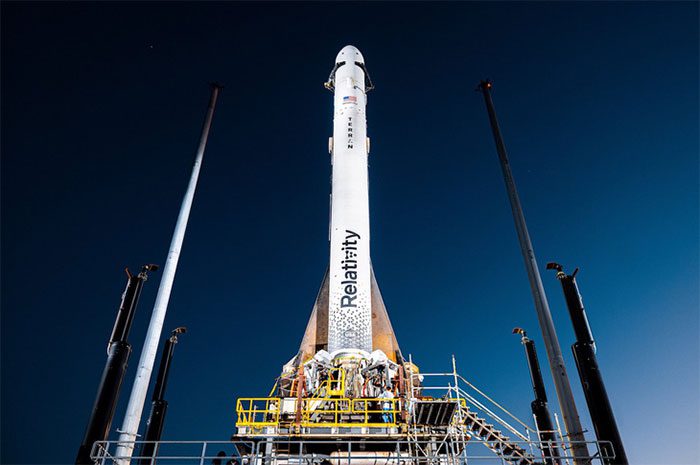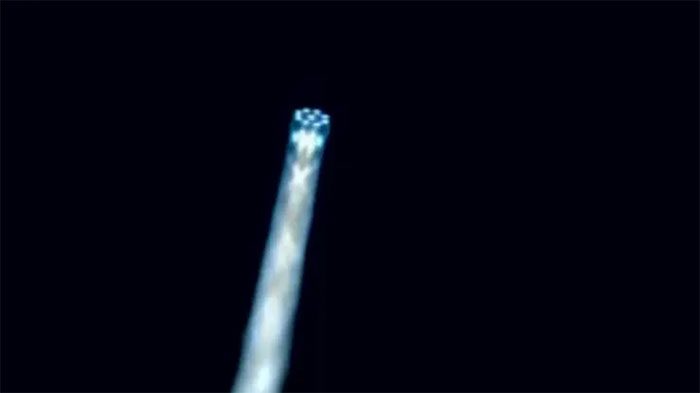On March 23rd (Vietnam time), the world’s first 3D-printed rocket was successfully launched, although it did not reach its intended orbit.
According to CNBC, the 3D-printed rocket named Terran 1 was launched at 11:25 PM on March 22nd Eastern Time (10:25 AM on March 23rd Vietnam time) from Cape Canaveral Air Force Station in Florida.
This rocket was developed by Relativity Space, a private aerospace startup based in California, USA.

Relativity Space’s Terran 1 rocket on the launch pad at Cape Canaveral – (Photo: Relativity Space).
“Significant Progress”
Relativity Space reported that the rocket flew for approximately three minutes. It accomplished a critical milestone by surpassing the point of maximum atmospheric pressure during the ascent, known as Max Q.
However, the rocket’s engine failed and exploded immediately after the second stage separated from the first stage.
Rocket launch director Clay Walker confirmed there was an “anomaly” in the second stage, and they would provide “updates in the coming days” after analyzing flight data.
Despite not reaching the designated orbit, the successful launch of the Terran 1 rocket demonstrated that 3D-printed rockets can withstand the rigors of launch and spaceflight. It also marks a significant advancement for the company.
Previously, Relativity Space had postponed the rocket launch twice (initially scheduled for March 8th and March 11th) due to technical issues.
The World’s First 3D-Printed Rocket

The green flame from the Terran 1 rocket, produced by a mixture of liquid oxygen and liquefied natural gas, during its ascent to orbit – (Photo: Relativity Space).
The Terran 1 rocket stands 33.5 meters tall with a diameter of 2.2 meters. About 85% of its components are made using 3D printing technology based on alloy materials.
The rocket operates using Aeon engines, which use liquid oxygen and liquefied natural gas – expected to be the “propellant of the future” – capable of fueling rockets to destinations as far as Mars.
According to Relativity Space, Terran 1 is the largest 3D-printed object to date, produced using the world’s largest metal 3D printer. It has 100 times fewer parts than traditional rockets. The cost and time to manufacture the rocket are also shorter, taking about 60 days.
The rocket is designed to carry a payload of 1,250 kg into low Earth orbit. Its improved version is expected to be twice as tall (66 m) and capable of carrying 20 tons.
The cost for each rocket launch is around $12 million, according to company information.
In comparison, SpaceX’s Falcon 9 rocket can carry 22 tons and costs about $67 million.


















































